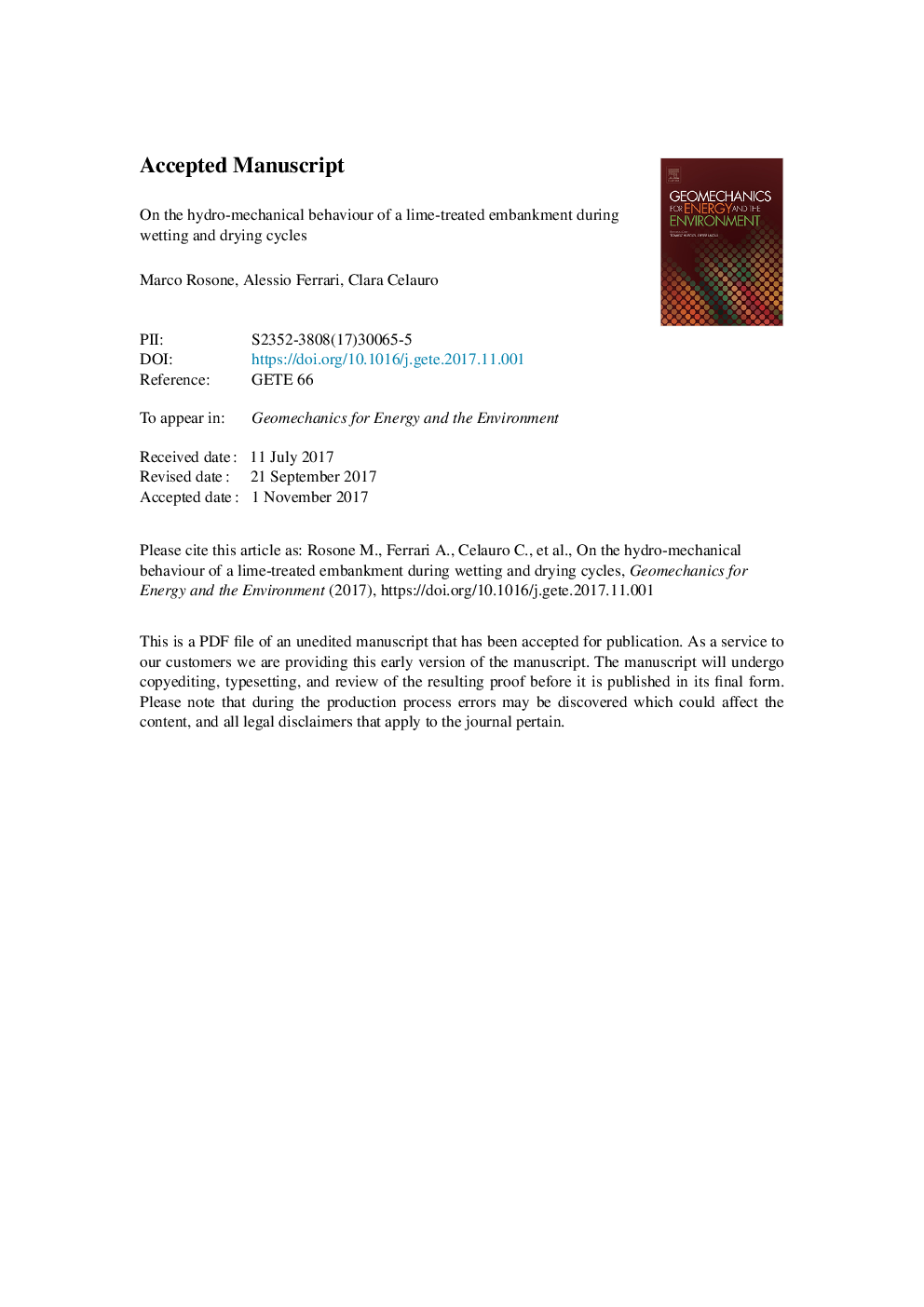| Article ID | Journal | Published Year | Pages | File Type |
|---|---|---|---|---|
| 6746601 | Geomechanics for Energy and the Environment | 2018 | 40 Pages |
Abstract
Direct shear tests, triaxial compression tests, swelling potential measurement and oedometric tests were performed on samples cured in controlled environmental conditions for at least 18 months. Wetting and drying cycles were applied in a very wide range of suction values with different experimental techniques. Test results show that the cyclic variations in total suction in the range 2-110 MPa give rise to significant irreversible deformations of shrinkage, since the material, during the wetting stages, proves to be unable to recover most of the deformations developed in the previous drying stages. However, this volumetric behaviour shows an almost reversible pattern after a few suction cycles. In contrast, saturation after drying implies a strong variation in the mechanical response due to the irreversible pattern of the observed volumetric behaviour. Accumulation of swelling deformation, reduction of the yielding stress, increase of compressibility and loss of shear strength due to softening of bonding, induced by the pozzolanic reaction products, were measured with the increase of the number of wetting and drying cycles. Mercury intrusion porosimetry (MIP) tests, carried out before and after the wetting and drying cycles, highlighted that cyclic suction paths result in a collapse of the structure since the pore size distribution of microstructure changes, its peculiar double-porosity network becoming almost unimodal in type.
Keywords
Related Topics
Physical Sciences and Engineering
Earth and Planetary Sciences
Geotechnical Engineering and Engineering Geology
Authors
Marco Rosone, Alessio Ferrari, Clara Celauro,
